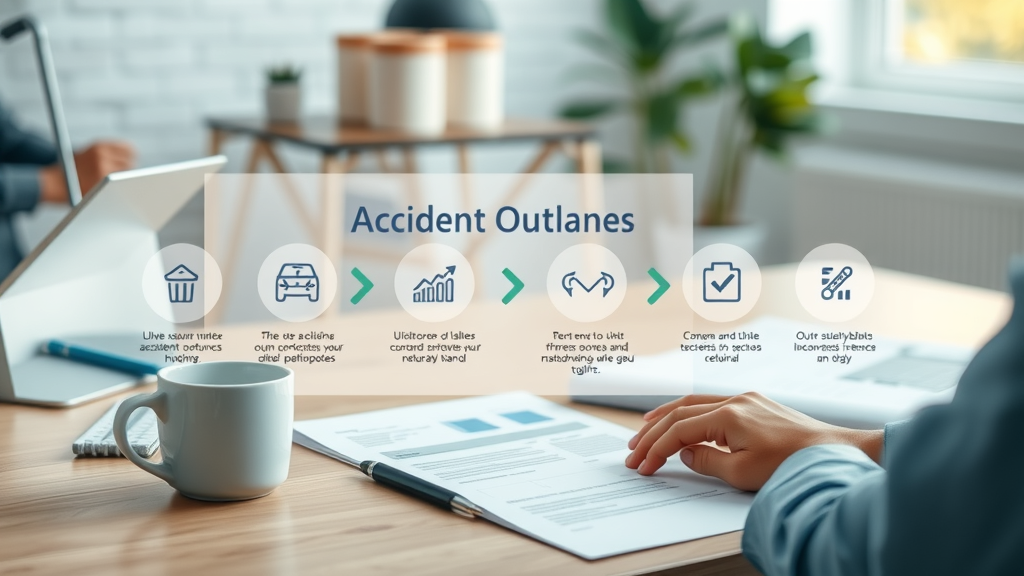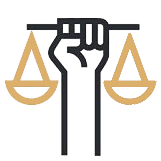Did you know that nearly 6 million car accidents occur each year in the U.S., yet less than half of victims fully understand the accident claim process? If you’ve experienced a car accident, you might be surprised how a clear strategy can turn next steps from overwhelming to empowering. This guide breaks down every part of the accident claim process for Tacoma, WA residents, so you no longer have to feel lost or confused in the world of insurance, paperwork, and settlements.
Revealing the Realities: Why the Accident Claim Process Matters More Than Ever
"Did you know that nearly 6 million car accidents occur each year in the U.S., yet less than half of victims fully understand the accident claim process?"
Understanding the accident claim process is more crucial now than ever before, especially for Tacoma drivers. Car accidents can happen in a split second, leaving you with not only vehicle damage but also a whirlwind of questions about insurance claims, car repairs, and what comes next. Without a solid grasp of the claims process, you risk missing compensation for medical bills, rental car costs, and more. Insurance companies and adjusters are experts in managing claims—shouldn't you have the same advantage? By learning how to file a claim and what steps are involved, you protect your rights, ensure a faster financial recovery, and avoid costly mistakes.
Whether it’s a minor fender-bender or a major auto accident, knowing how to handle the accident claim process helps maximize your settlement and reduces stress. From contacting the police to choosing a repair shop, every action you take influences the outcome. In Tacoma and beyond, being proactive is your best safeguard: document the scene, understand your insurance policy, and communicate effectively with your insurance company. The more you know, the less you’ll worry—and the more likely you are to come out ahead after a collision.

What You’ll Learn About the Accident Claim Process
- A step-by-step walk-through of the accident claim process
- Understanding the roles of the insurance company, repair shop, and insurance adjuster
- Tips on maximizing your car accident settlement
- How to navigate confusing paperwork and auto insurance policies
- The four key stages of filing an insurance claim after an auto accident
Understanding the Accident Claim Process—From Car Accident to Settlement
Defining the Accident Claim Process: What Tacoma Residents Need to Know
The accident claim process refers to the formal sequence you follow when seeking compensation after a car accident. In Tacoma, residents often find themselves overwhelmed by steps like reporting the accident, meeting insurance adjusters, and dealing with repair shops. But breaking it down helps. The process kicks off the moment an accident occurs and runs through to the final settlement or repairs being completed. Understanding your insurance policy (including auto insurance and what your insurance company covers) is essential. A typical claim involves reporting the incident, gathering documentation, working with your insurer and possibly an insurance adjuster, navigating repairs, and finalizing the payout. The more familiar you are with each stage, the faster and smoother your recovery—physically, financially, and emotionally.
Tacoma drivers should know that each accident claim can be unique, depending on whether the incident involved property damage, personal injury, or both. The claims process involves not just paperwork but active decisions regarding medical care, repair shop selection, and communicating your needs to adjusters. The sooner you begin, the better. Also, keep in mind, timelines and required documents can differ, so staying organized is key. By working closely with your insurance company and understanding your rights, you can ensure that no detail is overlooked and no potential compensation left on the table.
Types of Claims: Personal Injury, Auto Accident, and Insurance Claim
There are several types of claims you might initiate after a car accident. The most common are personal injury claims, auto accident claims (property damage and bodily injury), and insurance claims for medical bills, car repair, or lost wages. Tacoma drivers are often eligible to file a claim under their auto insurance, but in some scenarios, a claim might also be filed against the other driver's insurance policy (third-party claim). Personal injury claims are particularly detailed, requiring medical evidence and careful calculation of expenses. Understanding which type of claim fits your situation—property damage, injury, or comprehensive—helps streamline the accident claim process and ensures you don’t miss potential avenues for compensation.
Not every claim is straightforward. Sometimes you may need to file a car accident claim for both vehicle damage and bodily injuries, and knowing the difference matters. Auto policies often cover a range of scenarios, from minor fender-benders to major collisions involving motor vehicles and even uninsured drivers. Your goal should be full coverage for all damages suffered—physical, emotional, and financial. If you’re unsure which type of claim to pursue, consult a local Tacoma attorney or a trusted insurance agent before moving forward.

Step 1: Immediate Actions After a Car Accident
- Check for injuries and safety
- Contact local authorities
- Document the scene
- Exchange information
- Notify your auto insurance provider
The moments following a car accident are critical. Your first priority should always be safety. Quickly check yourself and passengers for injuries; if anyone is hurt, call 911. The next step is to contact the local authorities, regardless of how minor the accident may seem—a police report will play a significant role when you file a claim. Once everyone is safe, document the scene thoroughly. Take clear photos of damages, the road, license plates, and anything that might support your insurance claim. It’s wise to note environmental factors, such as weather or road conditions, to provide context for your claim.
Don’t forget to exchange contact info and insurance details with the other party involved. This includes names, phone numbers, license plates, insurance policy numbers, and driver’s license information. Afterward, notify your auto insurance provider as soon as possible, providing them with initial documentation and a detailed account of what happened. Early reporting ensures a smoother start to the accident claim process and helps prevent delays. Keeping calm and organized during these first moments lays a foundation for a successful file a car accident claim journey.
Step 2: How to File an Accident Claim with Your Insurance Company
Reporting Your Claim and When to File a Claim
As soon as the situation is stable and the necessary parties have been notified, it's time to report your claim to your insurance company. Your auto insurance provider will ask for an account of the accident, the details of the other vehicle, and any supporting evidence like photos, police reports, and estimated repair costs. It's a good idea to file a claim as soon as possible—delays can lead to challenges with your provider, and some policies have strict time limits for reporting. With modern systems, many insurance companies now offer mobile app claim reporting for added convenience.
Prepare before you file by collecting the key documents needed: police report, photos of the damage, and your insurance policy number. When you file a car accident claim, clarity and accuracy are vital for a timely resolution. Some claims, especially those involving personal injury, may require more in-depth evidence and prompt medical documentation. Don’t forget to ask your provider what’s needed up front, and clarify coverage limits and deductibles. Proper communication at this early stage streamlines the claims process and opens the door to a smoother, faster settlement.
The Role of the Insurance Adjuster in an Accident Claim Process
Once your insurance claim is filed, an insurance adjuster becomes your main contact within the insurance company. This specialist evaluates your damages and determines how much your provider will pay to settle your auto accident claim. Adjusters review photo evidence, repair shop estimates, medical bills, and any other documentation relevant to your claim. They'll often contact you for further details or arrange an in-person car inspection.
The adjuster's role is both administrative and investigative—they act as a liaison between you and the insurer, making sure all information aligns. It’s their job to confirm the legitimacy of the claim and ensure it meets the requirements outlined in your insurance policy. Building a cooperative relationship with your adjuster—while standing up for your rights—can make the difference between a frustrating and a fair settlement. Remember, while adjusters work for the insurance company, keeping detailed records and clear communication will help your case progress efficiently.

Accident Claim Process Explained: Working with Your Insurance Company
- Initial investigation and documentation
- Understanding your insurance coverage
- Communicating with your insurance company
- Rights and responsibilities during the claims process
Partnering proactively with your insurance company throughout the accident claim process ensures each stage is completed without delay or confusion. Soon after the accident, your insurer will assign a claims representative or insurance adjuster to your file. Their first job is the initial investigation—reviewing the police report, analyzing photos, and ensuring all paperwork is submitted. Your responsibility is to be honest, responsive, and thorough with every document and conversation. Not only does this keep the claim moving, but it also protects your rights should disputes arise.
Understanding your insurance coverage is just as important. Know what your policy covers—does it include rental car coverage, uninsured motorist protection, or comprehensive repairs? Familiarize yourself with your auto policy’s fine print, especially deductibles and coverage limits. Keep in mind: prompt, clear communication with your insurance company and repair shops minimizes errors and helps you repair your vehicle efficiently. By being involved at every step, you can advocate for the maximum settlement and get back behind the wheel sooner.
Step 3: The Insurance Adjuster and the Claims Process
How Insurance Adjusters Assess Auto Accident Claims
An insurance adjuster plays a pivotal part in validating and valuing your auto accident claim. Their assessment involves reviewing all documentation, including injury reports, repair shop estimates, photographs, and witness statements. They may visit the scene, examine the damaged vehicle in-person at a body shop or repair shop, and obtain third-party opinions if needed. Adjusters are trained to detect inconsistencies or errors in paperwork, so being accurate and honest is vital.
For Tacoma drivers, it helps to know that adjusters consult industry-standard software and databases to estimate repair and replacement costs. They also consider coverage limits and exclusion clauses in your insurance policy. If you disagree with their assessment, you can request a second opinion or submit additional evidence. Understanding your rights empowers you to challenge decisions and avoid common pitfalls. Taking an active stance during the evaluation phase strengthens your case for a fair outcome.
Tips for Negotiating with Insurance Companies
Don’t accept the first settlement offer if it seems insufficient. Negotiating with your insurance company can lead to better results, especially if you come prepared. Collect all evidence showing the full extent of your damages and losses—medical bills, car repair estimates, rental car invoices, and lost wage documentation. If your coverage includes extras like rental reimbursement, be sure to request them formally. Stay organized, polite, and persistent in your communications; documentation is your strongest ally if disputes arise.
Tacoma policyholders often find that a written response outlining discrepancies—such as missing medical bills or undervalued vehicle damage—encourages insurers to reconsider the offer. If you hit an impasse, consulting a personal injury attorney with experience in the accident claim process can give you leverage. An attorney understands how to present your case and may find overlooked compensation for pain and suffering, long-term medical care, or emotional distress. Remember, insurance companies are for-profit businesses; negotiating ensures you’re not leaving anything on the table.
Step 4: Car Repairs, Repair Shops, and Rental Cars During the Accident Claim Process
- Choosing a reputable repair shop
- Working with car repair specialists
- When and how to get a rental car
- Tracking repair progress through your auto insurance provider
After the accident assessment, your next big decision is selecting a repair shop or body shop to restore your vehicle. While some insurance companies recommend preferred shops for convenience or quicker claims processing, you generally have the right to pick your own. Tacoma drivers should look for facilities with certified car repair specialists and strong reputations backed by customer reviews. Quality repairs not only get you safely back on the road but also maintain your car’s value and warranty. When possible, ask for written estimates and make sure all work is approved by your insurance company before repairs begin.
If your car is not drivable post-accident, your auto insurance may pay for a rental car. Be sure to clarify how long these benefits last, coverage limits, and how to submit rental receipts for reimbursement. Throughout the repair process, maintain regular contact with the shop and your claims adjuster, ensuring any additional vehicle damage uncovered during repairs is covered by your claim. Many repair shops now offer digital tracking or status updates through a mobile app, simplifying the process for drivers. Always document the condition of your rental before use to avoid disputes later on.

Step 5: Settlement, Payment, and Finalizing Your Accident Claim
Understanding Car Accident Settlement Offers
Once repairs are complete and all bills collected, your insurance company will issue a formal settlement offer. This is your opportunity to ensure all eligible expenses—vehicle repairs, medical bills, rental car costs—are fully accounted for. Review the settlement paperwork carefully: it should outline payment amounts, covered damages, and any terms for release of liability. If something appears missing or unclear, request clarification or provide new evidence to justify adjustments.
Keep in mind, accepting a settlement offer generally means you cannot reopen the accident claim process for additional compensation later. Don’t feel pressured to sign documents immediately—take your time and compare the settlement to your calculated losses. If the settlement offer falls short, be ready to negotiate or seek legal counsel, especially for personal injury claims. Your goal should be fair, complete reimbursement, allowing you to move forward with peace of mind.
Ensuring All Damages and Medical Bills Are Covered
Before finalizing the claim, double-check that all car repairs, out-of-pocket medical expenses, lost wages, and other damages are properly included. Read each line item and match it to your documentation. Communicate directly with your insurance adjuster regarding outstanding medical bills or hidden repair costs that may arise late in the process.
If a dispute emerges or you feel an expense was denied unfairly, it’s time to consult a Tacoma-based personal injury attorney who specializes in the accident claim process. They can review your case, identify missed opportunities for recovery, and even negotiate with insurance companies on your behalf. Remember, the accident claim process closes only after you’re fully reimbursed for all allowed damages—and the settlement paperwork is signed.

People Also Ask: Your Accident Claim Process FAQs
What is the process of a personal accident claim?
Answer: The process of a personal accident claim involves notifying your insurance company, documenting the incident, undergoing assessment by an insurance adjuster, submitting necessary paperwork and medical evidence, and awaiting the insurer’s decision regarding approval or denial of the claim.
What are the 4 stages of the insurance claim process?
Answer: The four stages include: Incident reporting and documentation; claim filing with supporting evidence; investigation and evaluation by the insurer/adjuster; and settlement with compensation or repair authorization.
How does an insurance claim work after an accident?
Answer: After an accident, you report the incident to your insurance company, provide documentation, undergo evaluation by an adjuster, receive an estimate for repairs or compensation, and resolve the claim through repair or settlement.
How much are most car accident settlements?
Answer: Most car accident settlements vary depending on injuries, property damage, liability, and coverage. Typical settlements range from a few thousand to tens of thousands of dollars, though severe cases can be substantially higher.
Accident Claim Process in Practice: Case Studies & Tacoma, WA Insights
"Local insight: 'Our Tacoma clients repeatedly emphasize the difference a clear accident claim process makes in their financial and emotional recovery.' – Attorney Debra Burgess"
Case studies from Tacoma reveal a consistent truth: drivers who understand the accident claim process recover both financially and emotionally with greater success. For example, one local family involved in a multi-car accident leveraged detailed documentation and direct communication with their insurance adjuster to recover not only repair costs but also lost wages and ongoing medical bills. In another case, a Tacoma commuter filed a car accident claim and, with legal guidance, challenged an insurer’s low settlement, ultimately receiving compensation that covered extended rehabilitation and property losses.
Attorney Debra Burgess shares, “Clients who follow each step—especially early reporting and detailed documentation—see a smoother claims process and better results. A personal injury attorney can help when disputes arise, but being informed and engaged from the beginning transforms the experience for Tacoma drivers.” These real-world accounts demonstrate the value of proactivity and knowledge—qualities this guide strives to instill.
Tables: Side-by-Side Comparison of Accident Claim Process Steps
| Step | Responsible Party | Timeline | Key Documents |
|---|---|---|---|
| Initiate Claim | Policyholder | 24 hrs–7 days | Police report, photos |
| Adjuster Review | Insurance Adjuster | 3–14 days | Repair estimates, medical reports |
| Repair Process | Repair Shop & Insurance | Varies | Invoices, work orders |
| Settlement | Insurance Company | 1–30 days | Release forms, payment info |

Key Takeaways: Making the Most of the Accident Claim Process
- Act quickly and document thoroughly after a car accident
- Understand each party's role in the accident claim process
- Don’t hesitate to negotiate with your insurance company
- Work with trusted auto repair shops
- Consult a Tacoma personal injury attorney if disputes arise
FAQs About the Accident Claim Process in Tacoma, WA
-
How long will my insurance claim take?
The length varies; most claims resolve in 2–6 weeks; complex cases can take longer depending on repair needs, injuries, and coverage limits. -
What documentation do I need to file a car accident claim?
Police report, photos of damages, contact info for other drivers, medical bills, repair estimates, and a copy of your auto insurance policy. -
Does fault affect the accident claim process in Washington?
Yes, Washington is a comparative fault state. Your claim could be reduced by your percentage of fault in the accident. -
Can I choose my own repair shop?
In most cases, yes. You have the right to choose a repair shop, even if your insurance company recommends others. -
What if the insurance settlement won’t cover my bills?
Consult a Tacoma personal injury attorney for assistance. You may be able to negotiate or explore additional coverage under your policy.
Conclusion: Navigating the Accident Claim Process with Confidence
By understanding and actively engaging in every step of the accident claim process, Tacoma drivers can protect their finances, wellbeing, and peace of mind. Take charge of your recovery—document, communicate, and seek support whenever needed.
Ready to begin your accident claim process? Email us at dburgess@pugetsoundinjurylaw.com for expert legal guidance.
Visual Walkthrough of the key steps in the accident claim process: post-accident safety, documentation, claim filing, insurance adjuster visit, car repairs, and settlement. Visuals include clean motion graphics and real-life scenarios with Tacoma city backgrounds, ensuring diverse, natural scenes and smooth transitions.
Hear directly from Tacoma clients as they share their experiences. Real-life accident claim process success stories highlight the difference thorough documentation, timely claim filing, and legal guidance made for their settlements and recoveries.
Understanding the accident claim process is essential for effectively managing the aftermath of a car accident. The North Carolina Department of Insurance provides a comprehensive “Accident Checklist” that outlines crucial steps to take immediately following an accident, such as ensuring safety, contacting authorities, and gathering necessary information. (ncdoi.gov)
For a detailed, step-by-step guide on filing an insurance claim after an accident, the article “How to File a Car Accident Claim: A Step-By-Step Guide” offers valuable insights into the entire process, from reporting the accident to your insurer to seeking medical treatment and building your claim. (cooneyconway.com)
If you’re serious about navigating the accident claim process efficiently, these resources will provide you with the knowledge and tools necessary to handle your claim with confidence.
 Add Row
Add Row  Add
Add 




Write A Comment